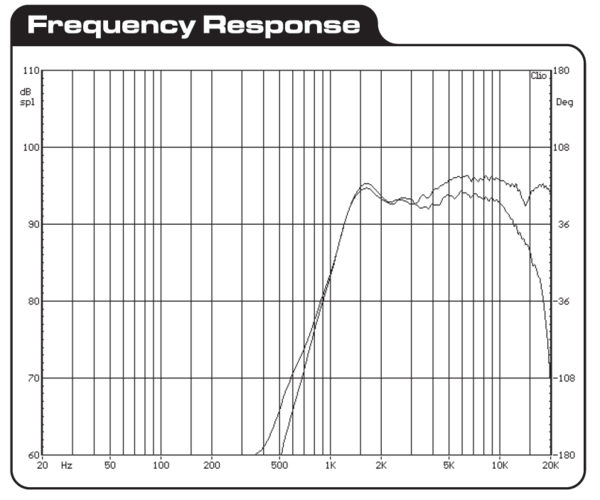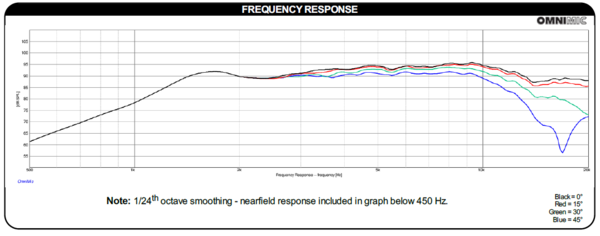Note: Tom made his post before I wrote this. No disagreement with what Tom wrote. However, I'd rather retake my old calculus classes than participate in another of these tests. When a test is performed and fails to demonstrate expected results, the logical conclusion is that the test is flawed, or that the assumption of differences was fallacious.
Several of us heard, previously, distinct differences in listening. Yep, cap values, SPL, and self-delusion could be at play. Trouble is, these differences have been heard time and time again by different observers in differing situations. One cannot choose between paint chips in dim light.
Several things contributed, IMHO to the lack of (95%) correct results in listening.
1) The old tweeters in my speakers, Dayton PT2C-8, have a horrible HF rolloff. I chose them from a manufacturer's data sheet, which they later revised without a model change. See attached FR curves. Downloaded 2015 and 2016. This certainly made it more difficult to discern the fine details we listen for. Let's face it, all that we are listening for is fine details. Any POS stereo from Best Buy presents most of the music.
Attachment:
 2015-FR.PNG [ 43.65 KiB | Viewed 149785 times ]
2015-FR.PNG [ 43.65 KiB | Viewed 149785 times ]
Attachment:
 2016-FR.PNG [ 53.26 KiB | Viewed 149785 times ]
2016-FR.PNG [ 53.26 KiB | Viewed 149785 times ]
2) The time delay between "changes of caps" was way too long. It had to be at least five minutes each time when we left the room.
3) The music selection was terrible. Eva Cassidy "Dancing Cheek to Cheek", the first cut on the disc. The engineer is clearly "fiddling with the knobs" as the performance progresses, further making it difficult to hear the minute details which make a difference for some of us.
4) Personally, I'd never participated in such a test before. I never suspected that the same cap would be presented to us five or six times in a row. From my standpoint, sitting and listening, after (five minute?) intervals where we'd left the room while the "cap change" was made, was never anticipated. I kept listening for differences and expected I should hear something. I was not listening so much as trying to hear a difference so I could check out a box. Again, IMHO, this can work when choosing between red and blue, but not fine shades of pink, walking away from the canvas for minutes at a time in an adversarial situation where someone is ardently trying to show you that you are wrong.
5)A higher resolution setup with proper source material without the anxiety would be a better environment in which to make a proper evaluation.
6) Honestly, this "testing" simply removes the joy out of the whole DIY hobby for me. That's just me. If this is what the hobby is to be, I want no part of it.
Carry on and just call me stupid and self-delusional. I can handle it. [You wouldn't be the first to level such criticisms at me!]



